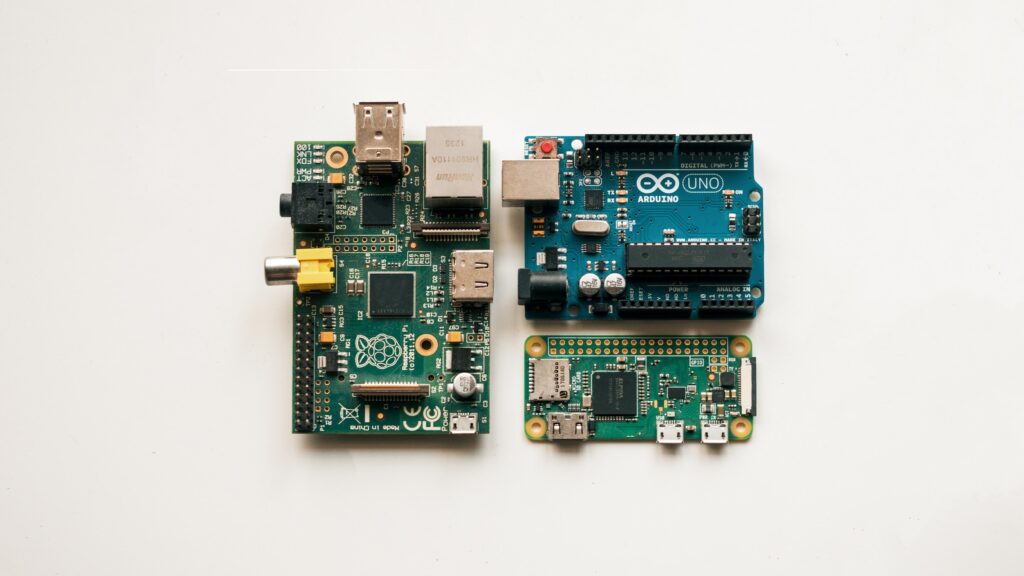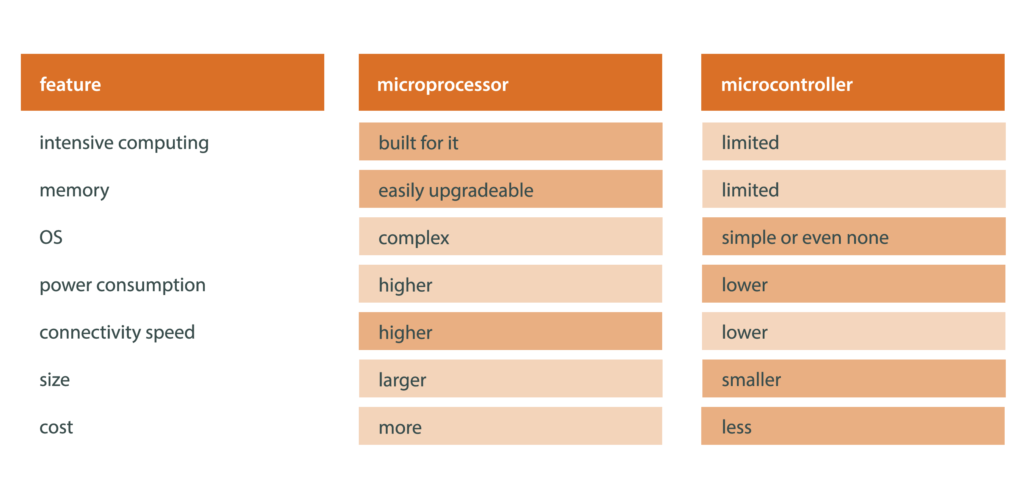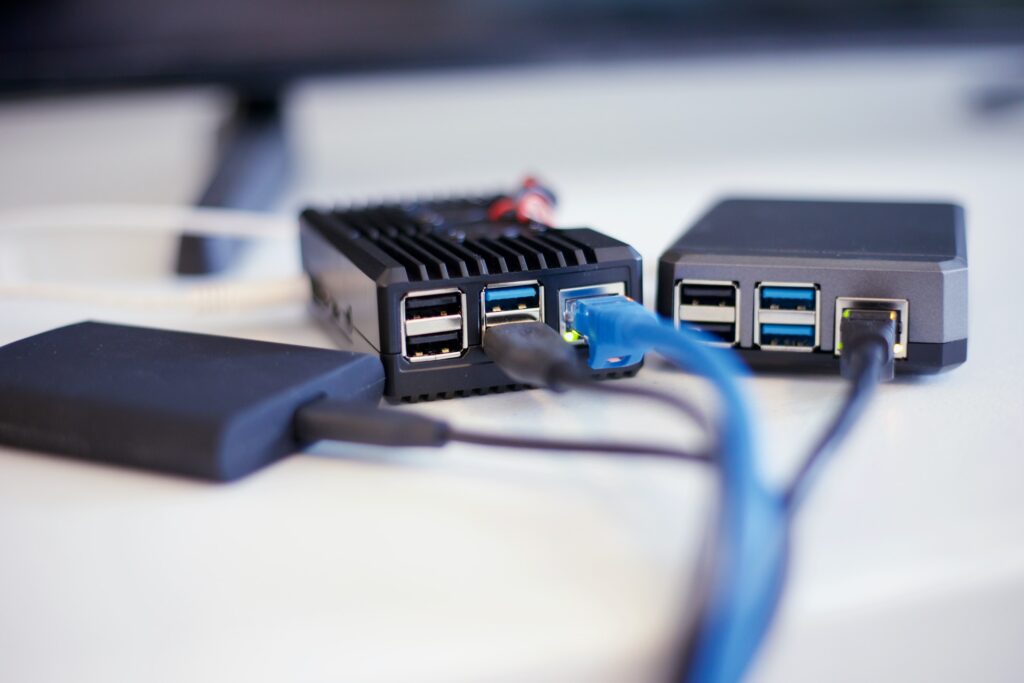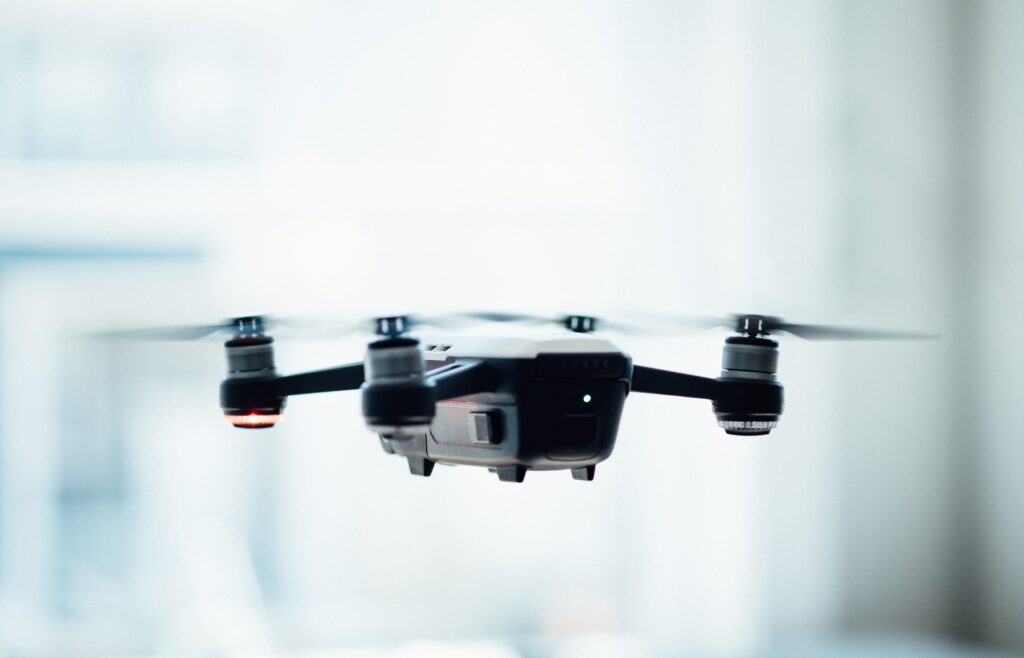Microprocessor vs Microcontroller in Embedded Systems
5 June 2023
5 June 2023
As hardware manufacturers continue to come up with new technologies, deciding between a microprocessor vs microcontroller-based embedded system is no longer a straightforward decision. With advanced 32-bit microcontrollers available on the market, the line between the world of microprocessors and microcontrollers seems to be blurring.
Choosing the right hardware components will determine the efficiency of your embedded system and the success of the entire endeavor. In the wider IT industry, even Apple switched from Intel’s x86-64 processors to Apple-designed SoCs based on ARM64 architecture for their Mac computers.
Our clients consider the microprocessor vs microcontroller debate especially when looking to develop low-power solutions. In this article, we highlight the key differences and examples of recent advancements in the market to help you choose the right option for your project.
Microprocessor is an electrical component that consists of the logic, arithmetic and control units. It needs to be connected to external memory, storage and peripherals of choice to function. Microprocessors are generally more powerful than microcontrollers. They also enable you to add more complex components to your system. Microprocessors can be found in advanced consumer electronics and single-board computers such as Raspberry Pi 4
Microcontroller, in turn, is viewed rather as a controlling unit that consists not only of the processing element but also memory, timers and I/O interfaces all tightly integrated with each other. The core of a microcontroller works similarly to a microprocessor but the devil’s in the detail—these additional elements. Microcontrollers are commonly used in remote controllers, smart plugs and implantable medical devices.
Nowadays, the microcontroller market seems to be developing in a few directions:
“Apart from the mainstream microcontrollers, we also see the high-performance ones designed for more complex applications as well as ultra-low-power ones, optimized for efficient energy solutions. Yet, advanced embedded systems demanding complex tasks still rely on microprocessor-based systems.”
Artur Gdański, Embedded Solutions Manager at Tronel

With such dynamic changes in the market, is the simple “microprocessor vs microcontroller” comparison still relevant? Let’s take a closer look at the main distinctions between both domains.

Microprocessors clearly win in raw computing power with clock speeds ranging from a couple of hundred MHz to even above 5GHz. This translates into remarkable computational speed and operational efficiency. They can support complex tasks such as streaming a 4K video or running a local server.
Some microprocessors even come equipped with additional modules to enhance their functionality. For example, the Nvidia Jetson Nano incorporates a graphics processing unit (GPU) specifically designed for machine vision and AI computations.
Unlike microprocessors, microcontrollers are intended to perform the same, basic tasks and thus come with limited performance and speed. This makes microcontrollers perfectly suited for applications that require less computational intensity, such as sensor reading, serial communication, or mechanical control systems. Yet, they might lack processing power for computationally intensive tasks. If after sensor reading your system should perform data processing, you might consider using a microprocessor-based system or a dual one such as STM32MP1.
However, let’s keep in mind that the hardware market is constantly developing. The efficiency and capabilities of microcontrollers are dramatically increasing.
A perfect example is STM32H7 — an Arm Cortex M7-based MCU — clocked at speeds up to 550 MHz with a benchmark performance greater than 1,000 DMIPS. But its potential doesn’t just lie in speed. STM32H7 also offers 564KB RAM, Ethernet support and up to 2 Mbytes Dual Bank Flash Memory. Currently, it’s one of the fastest and most advanced microcontrollers available on the market that seems to bridge the gap between microcontrollers and microprocessors.
As the memory in microprocessors is externally connected, it can be customized and easily upgraded depending on future project requirements. This offers greater flexibility to the user who can choose the size and speed of RAM and ROM for the system.
In microcontrollers, memory is integrated into the chip itself which limits its size. The on-chip embedded flash memory in microcontrollers is often limited to just 2MB and can simply be not sufficient enough for the project. At the same time, however, as the memory and CPU are closely integrated into microcontrollers, memory operations’ speeds might be slightly higher.
Microprocessors are often paired with complex operating systems like Linux. While they enable the execution of various tasks, you will need complex software to facilitate these operations effectively. Microcontrollers, in turn, usually don’t need a full-scale OS to function as the applications can run directly using small firmware. This often makes microcontrollers easier to program, especially for simple and repetitive tasks. At Tronel we program both types of systems, the question is which is better for your product.
Microprocessors generally consume more energy than single-chip microcontrollers as they operate at much higher speeds. Even though low-power modes exist, they’re still not as low as those in microcontrollers. However, you will still find power-optimized microprocessors in the market. An example is the SAMA5D3 series from Microchip which, despite high performance and enhanced user interfaces, can still be powered with a battery.
While both microprocessors and microcontrollers offer a wide range of connectivity options, the difference lies in speed. Microprocessors easily handle high-speed data, which makes them compatible with faster interfacing protocols such as Gigabit Ethernet and USB 3.0. In microcontrollers, limited computing power results in lower data processing speeds and, ultimately, lower connectivity speeds.

The overall size of a PCB with a microprocessor is comparatively large. After all, its CPU consists of billions of transistors and it also needs to be interfaced with other components – memory, timers and converters. Microcontrollers usually house everything on a single chip. They’re smaller, lighter and can be placed easily in remote locations. That’s why you’ll find microcontrollers in wearable electronics such as smart watches, smart glasses and fitness activity trackers.
Generally, microprocessors are more expensive than microcontrollers. For example, prices of Arduino range between $20 and $40, and prices of STM32 Nucleo start at just $10 In comparison, Libre Computer Board AML-S905X-CC, a popular alternative to Raspberry Pi 4, costs $35 and more advanced modules such as Nvidia Jetson might cost up to $500. Nevertheless, there is a wide range of options and prices available on the market for both microprocessors and microcontrollers.
One of our clients who faced the choice of the optimal platform for their system was a German company specializing in solutions for industrial image processing. They turned to Tronel to develop a suitable embedded system for their thermal imaging quality drone.
The prototype system was based on Raspberry Pi. However, after cautiously analyzing performance needs, we decided to switch to a more powerful SoC optimized for image processing. We changed the platform to Nvidia Jetson with an advanced graphics processing unit, which allowed us to provide greater efficiency and higher image and video quality.

What platform will be best suited for your embedded project? There’s no one simple answer to this question. Broadly speaking, microcontrollers tend to be a better option for power-saving solutions, and microprocessors will be more suited for functionally rich and high-performance applications.
However, the market is changing rapidly and each year new hardware platforms are being introduced to the market blurring the line between the worlds of microprocessors and microcontrollers.
Our experts are more than happy to advise on the best platforms suited to your requirements. Get in touch today and tell us more about your embedded project.
By Monika Wozniak

